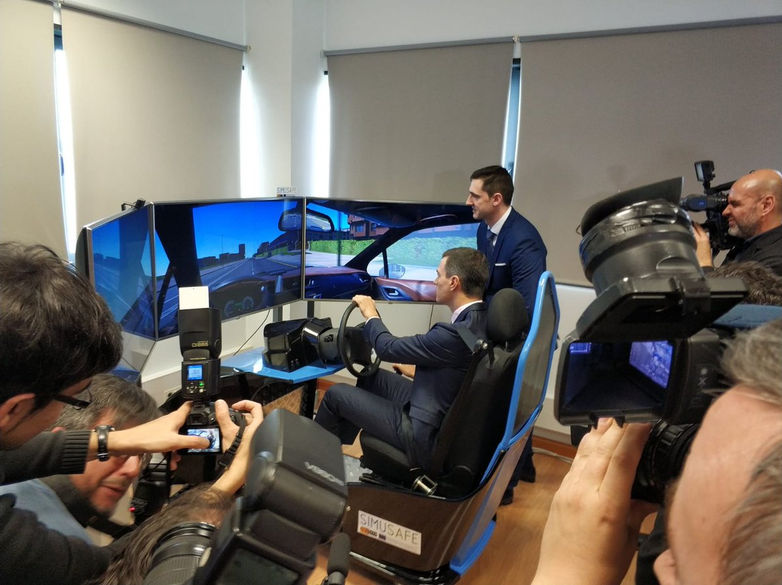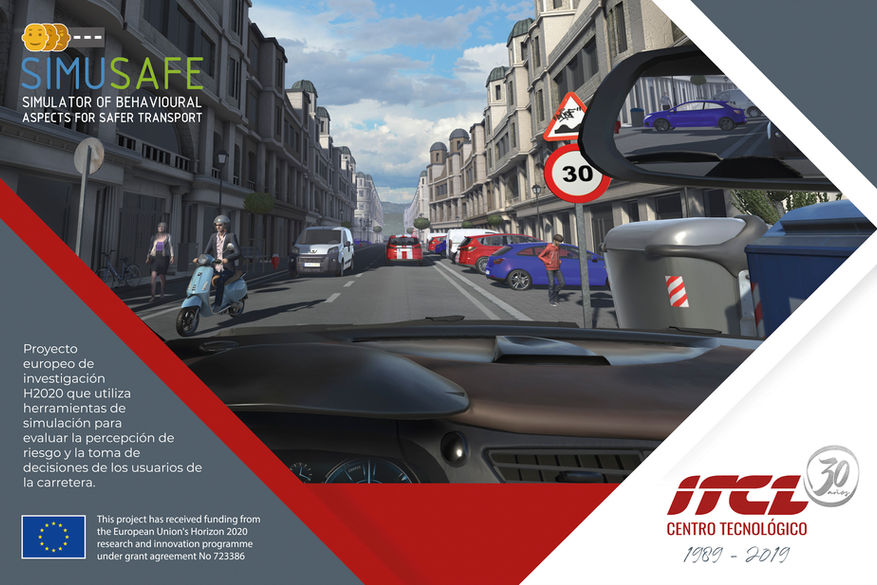Tags:
SIMUSAFE

My role:
I worked in the project from the beginning, in the original idea of the project to win the H2020 call.
I am the project coordinator at ITCL. I participate in all the consortium meetings and in the meetings of several of the work packages. We lead the simulation part and more specifically the visual and multi-post simulation. I am also involved in technical decisions and approaches to the whole project.
More info:
Description:
Simusafe is a Horizon 2020 European project, led by ITCL (MG-3.5-2016), started in June 2017 and currently under development.
The project will create 4 types of simulators (car, motorcycle, bicycle and pedestrian) that interact in the same virtual environment to study their interactions.
SIMUSAFE (SIMUlator of behavioural Aspect for SAFEr Transport) will create the tools that will allow the analysis of user behaviour while driving simulators. The different tasks will measure the differences between real and simulated driving so that a study can be conducted using substances such as alcohol or drugs.
The simulators are developed under Unity3D
The project will last 42 months and its consortium is formed by 16 partners. ITCL is the project leader.
Data collected from simulations will be correlated with naturalistic driving tests, such that the simulation and model aspects are the closest possible to real-world data. We want to analyse the existing bias between the simulators and the real conditions. From the developed models, contributing factors causing an event (crash, near-collision, infractions) will be identified and studied further.
The whole project has three main cycles:
-
First, project partners will collect naturalistic driving, riding, and walking behaviours in uncontrolled environments for a baseline. Similar conditions will be replicated in the Naturalistic driving in simulators.
-
Second, we will collect behavioural and physiological responses under more controlled conditions to connect risk-taking behaviour and cognition. The above data-collection phases will be refined, correlated, and used to create more realistic multi-actor simulation models.
-
Third, SIMUSAFE will study the behaviours and responses of road users driving, riding, and walking under high-risk situations and impairment conditions







